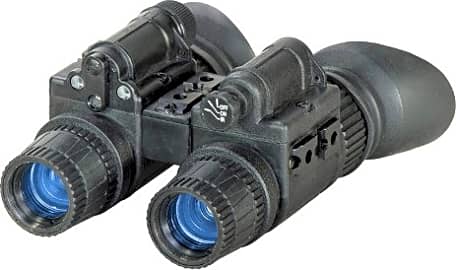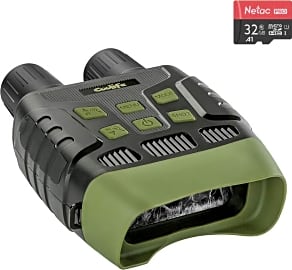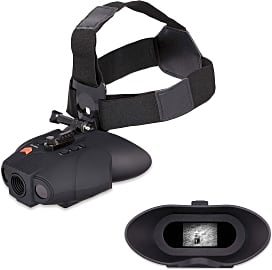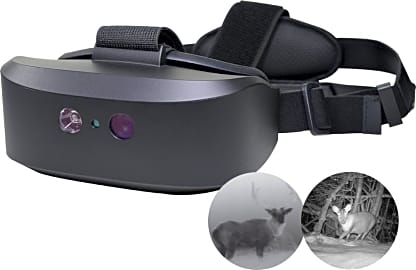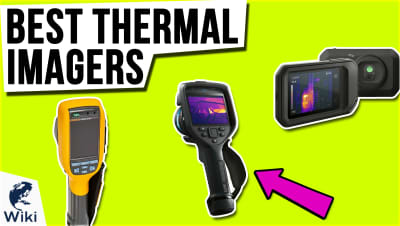The 6 Best Night Vision Goggles

This wiki has been updated 47 times since it was first published in February of 2015. Whether you are preparing for 24-hour surveillance, planning a nighttime hunt, or simply nature watching in low-light conditions, these night vision goggles will provide you with the view you need. We've included affordable NVGs for amateur users, as well as military-grade glasses that can stand up to any scenario, ranked here by their brightness, image quality, and ease of use. When users buy our independently chosen editorial selections, we may earn commissions to help fund the Wiki.
Editor's Notes
July 28, 2020:
With Armasight effectively being absorbed by industrial imaging giant FLIR, their goggles have suffered a significant decrease in availability, and it's unclear at this point whether FLIR will use the tech they acquired to pursue new models, since their company is better known for producing infrared cameras and other heat-sensitive equipment.
Despite that change and a few others on the market, there's still a pretty clear line between high-end military-grade options like the PRG Defense Apache Aviator A-9 and the models you'll see in our special honors section. These top-tier selections don't emit any infrared radiation the way cheaper models do; rather, they have an optical technology that creates pings against a sensor when exposed to certain wavelengths of light. That's why these tend to cost so much — both because that technology is so much more expensive than infrared emission, and because it's more delicate, necessitating significant increases in the durability and protectiveness of a given model's housing.
Among consumer models, most offer some kind of viewing screen instead of individual eyepieces, which often does away with the need for adjustable interpupillary distances, and also allows for things like digital zoom and even the preservation of images as still photos or video. Many such models better fit the category of binoculars, however, so we wanted to make sure that we only included models that offered 1x magnification before their zoom capabilities began.
April 16, 2019:
The ATN PS154 continues to be one of the finest options on the market, but we saw it slip out of the top spot and into the third mainly due to its high price point and what it offers users compared to something like the Armasight Nyx 7 Pro, the generation three variety of which boasts a more robust housing than its gen 2 version, as well as ready adaptability to a variety of cameras.
New to the list are the Superior Tactical PVS-7, which may have fought for the number one spot if they'd come with the kind of helmet mounting hardware that's such a standard inclusion with most brands in the category. These come in to replace the Aramsight Spark-G, which could no longer be included due mainly to availability issues.
Special Honors
Elbit Systems Offering undeniably military-grade models, this company has systems built for terrestrial use, as well as those intended for use in the sky, whether by stealth pilots or gunners in a chopper. They also have the ability to integrate highly accurate compasses into their builds that relay your heading to a heads-up display built into the eyepieces. elbitsystems-us.com
Act In Black DTNVG-14 Weighing in a just 565 grams, this model shouldn't tire your head or neck out too quickly. They offer a 40-degree field of view, as well as the ability to turn off automatically when you flip them up, saving crucial battery power. They can focus as close as .25 meters and out to infinity, and they come with a big, protective hardshell case. actinblack.com
From Photons To Electrons And Back Again
Those phosphorescent photons are what cast the green color on your night vision image, the light from which then travels through the goggles' ocular lens and into your eye.
Most people like to think of spy movies and army films when they consider night vision goggles, but my love affair with the technology reaches back to the cartoonishly large Night Vision Devices used by young Tim Murphy in Jurassic Park. They made for the coolest toy in the series of vertically integrated products released by Universal, but I never did get a pair from my parents.
Looking back, the toys would never have done the job you saw in the movie. They were essentially just giant pairs of green-tinted glasses that made the world around you look vaguely like the images produced by a pair of night vision goggles. Why green? Well, we'll get to that. But first, a lesson in light.
Human beings only see a certain portion of available light along what we call the visible spectrum. Above that spectrum is ultraviolet light (the stuff that gives you sunburn), and below it is infrared light (the light your remote control uses). NVDs are sensitive to infrared light as well as visible light, so they can collect light the wavelengths of which are too long for our eyes to detect.
When that light passes through the objective lens or lenses on a pair of night vision goggles, it meets a series of plates that enhances its power. The first of these is called a photocathode, which is a negatively charged plate that ejects an electron further down the tube in exact correspondence to any photons of light that hit it.
The next element is called a microchannel plate. When the electrons from the photocathode pass through the MCP, 5,000-volt bursts of electricity accelerate them through microscopic channels in the glass. On their way through these channels, the MCP emits thousands of electrons that, again, correspond to the position and intensity of the original photons. This is due to a phenomenon called cascaded secondary emission.
Finally, these newly multiplied electrons pass through a screen coated with phosphors. The energy of the electrons excites the phosphors, the electrons of which release photon particles as they descend from an excited state. Those phosphorescent photons are what cast the green color on your night vision image, the light from which then travels through the goggles' ocular lens and into your eye.
In short, these goggles take in all available light from the infrared spectrum up through the spectrum of visible light, convert its photons to electrons, exponentially multiply those electrons, and revert all those new electrons back into photons that your goggles then focus into a clear, night vision image.
Two Eyes Are Better Than One
Choosing from among the night vision goggles on our list is likely going to come down to your intended use for them. Although there are many striking similarities from set to set, you should notice at least one or two major differences among them.
For starters, there's the imaging tube, or tubes. Some of the pairs on our list utilize a single tube that splits the image between two eyepieces. The effect is a little more like looking through a pirate's spyglass than, say, a pair of binoculars.
While some of the goggles on our list do boast a certain degree of magnification, it isn't always included with a set, nor is it always ideal.
For that latter effect, you'd want a pair of stereo goggles, with two tubes discreetly dedicated to each eye. This type of goggle provides significantly improved depth perception, but it also requires twice as much imaging hardware compared to its simpler cousin. That means it's usually a lot more expensive.
Speaking of spyglasses and binoculars, one might expect these devices to magnify the images seen through them, as well. While some of the goggles on our list do boast a certain degree of magnification, it isn't always included with a set, nor is it always ideal. Imagine a group of Marines in close, dark combat, the enemy a mere five or ten feet away. With 8x magnification (a relatively standard enhancement on common binoculars), the soldiers in question would never clearly see the enemy.
This is an extreme example, of course, but it illustrates that any and all magnification built into the goggles you choose ought to serve the majority of your purposes, or else it might become a burden.
Let Your Little Light Shine
The first night vision goggles saw use on the battlefields of WWII and the Korean War. These used a technology called active infrared, which sends a beam of infrared light outward into the environment not unlike the beam of a flashlight. In addition to being weaker in power and resolution compared to modern goggles, anyone else with night vision technology could easily see the beam your goggles emitted and nail down your location.
After that, the military improved the design and makeup of the photocathode at the top of the tube, which initiated a much cleaner, more precise electron transfer.
The first night vision goggles to bypass an active infrared system relied much on the light cast by stars and the moon for their data collection, but on a moonless or a cloudy night, this technology proved very ineffective.
The microchannel plate was the next addition to the goggles' technology, and suddenly the images rendered were sharper and brighter than before, since the number of present electrons skyrocketed. After that, the military improved the design and makeup of the photocathode at the top of the tube, which initiated a much cleaner, more precise electron transfer.
The technology used by the military today is available all around the world, though there are export bans on certain brands and styles, as the US attempts to keep a few of its remaining night vision technology cards close to the vest.



